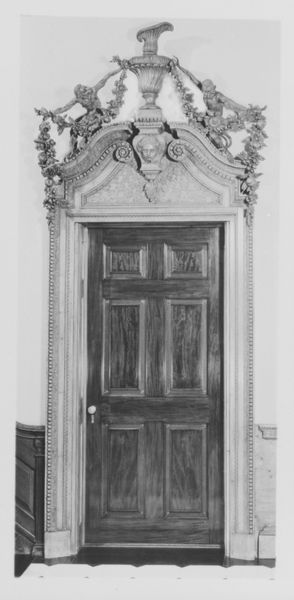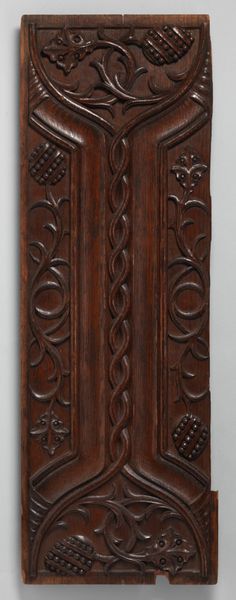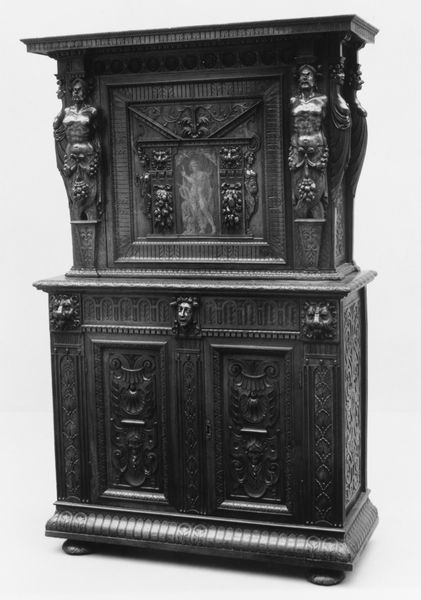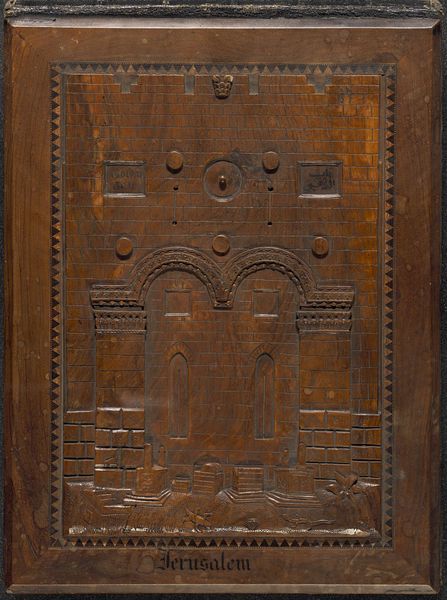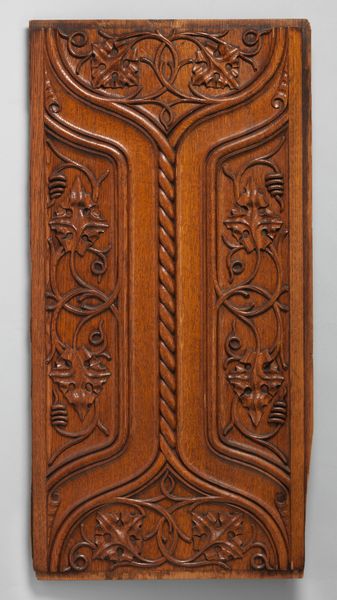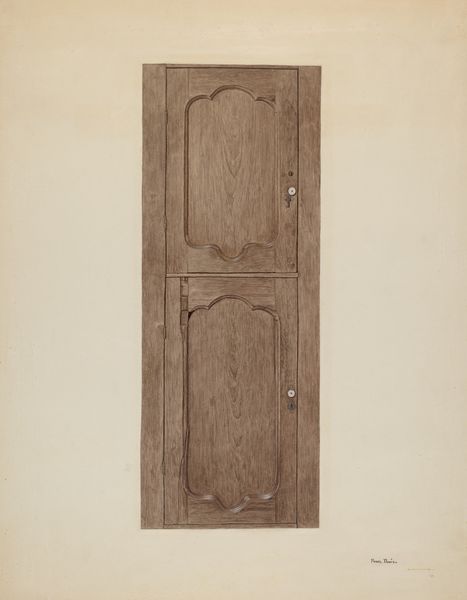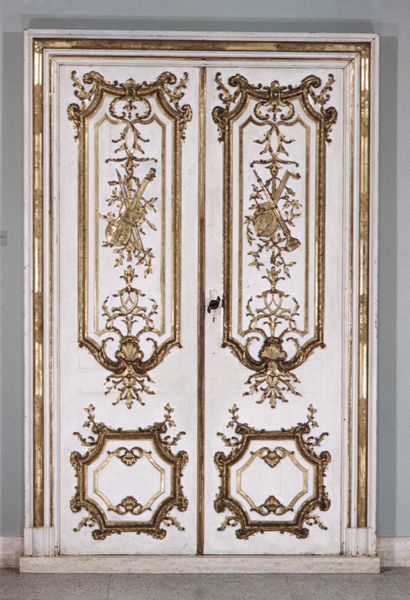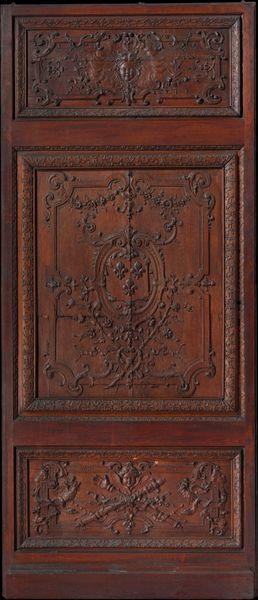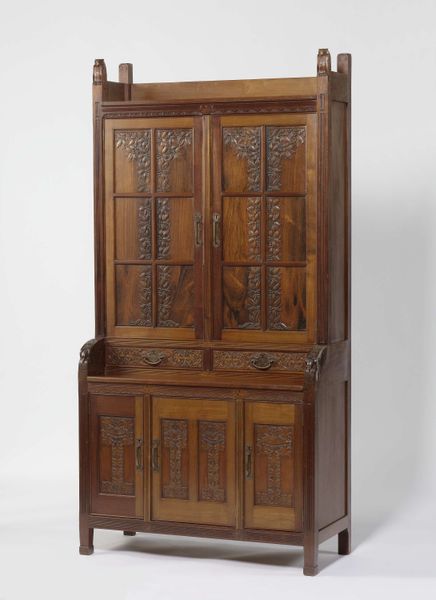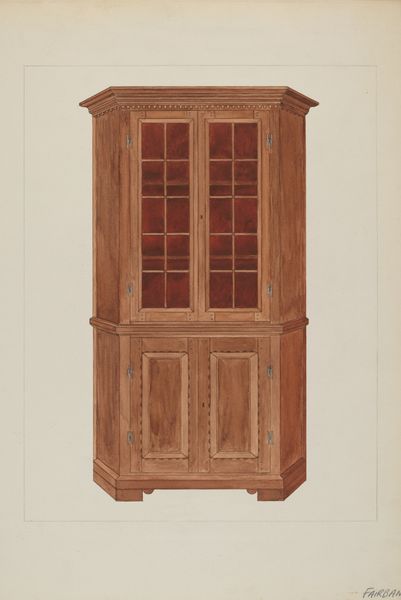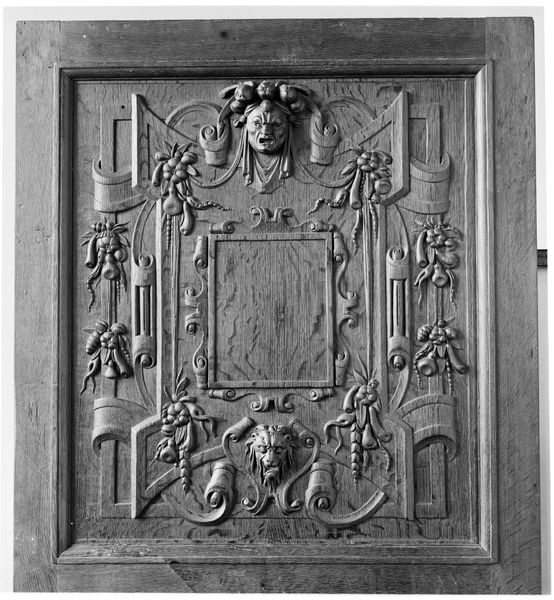
carving, sculpture, wood
#
carving
#
sculpture
#
textured
#
sculpture
#
wood
#
decorative-art
#
italian-renaissance
Dimensions: 77 1/4 × 30 in. (196.2 × 76.2 cm)
Copyright: Public Domain
Curator: I find myself intrigued by this four-panel door, known simply as "Door." It dates back to 1545-1555, a time of great artistic flourish during the Italian Renaissance, and it's held in the collection of the Metropolitan Museum of Art. What springs to your mind? Editor: It feels incredibly somber. There’s a darkness, almost oppressive, to it despite the decorative carving. It makes me think about secrets, and thresholds not meant to be crossed. The grain in the wood looks very textured. Curator: That sense of seriousness is interesting, given the Renaissance was also about celebrating beauty and humanism. Consider the function, though – a door signifies both enclosure and passage, marking physical and perhaps metaphysical boundaries. Notice how the Italian Renaissance loved symmetry and ornamentation; the carefully crafted carving adds another layer of meaning to something functional. Editor: Definitely, that repetitive scroll pattern is mesmerizing, but it almost traps the eye. It feels less celebratory and more like a decorative cage. The central boss, these protruding, rounded elements – they seem like stylized eyes watching the potential entrant, a permanent sentry guarding a private world. Curator: Precisely. That recurring motif channels established Renaissance symbology: elements derived from acanthus leaves intertwine to indicate rebirth and flourishing. Consider, then, how that symbolic intention merges with the functional sternness. Could the “Door” embody something deeper? Editor: I suppose it speaks to a complexity, the Italian Renaissance was about more than just simple joy; there’s intellectual tension and sometimes even spiritual torment under the beauty. To open this door could be to open up Pandora's Box. A fitting artistic puzzle. Curator: Indeed. And to reflect on a functional object – a door! – through such layers of symbolism is profoundly enlightening. It invites one to consider both passage and prohibition within Renaissance thought. Editor: Absolutely, I'll never look at a door the same way again. It really drives home that every threshold is more than just getting from A to B. It can hold more than first meets the eye.
Comments
No comments
Be the first to comment and join the conversation on the ultimate creative platform.

